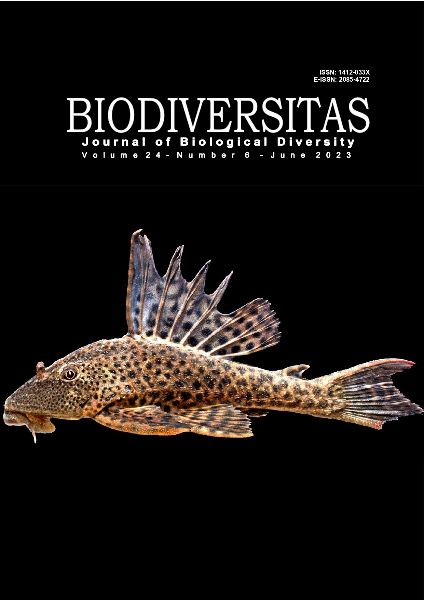Population ecology and genetic study of gaur (Bos gaurus) in a small protected area in Thailand
##plugins.themes.bootstrap3.article.main##
Abstract
Abstract. Pitimol N, Srikosamatara S. 2023. Population ecology and genetic study of gaur (Bos gaurus) in a small protected area in Thailand. Biodiversitas 24: 3369-3377. Gaur population in Khao Phaeng Ma (KPM) restored forest increased from 6 individuals in 1995 to 1996 in 2006 and more afterward. Data on population sizes, distribution and genetic status are needed for effective management. The aim of this study was to obtain data on gaur population size, structure and broad distribution, and on gaur genetic diversity in KPM. For a one-year period from 2014-2015, data were collected in three areas on gaur number, group size, sex, and age using direct observation. Genetic diversity was examined at 15 cross-species microsatellite loci. The total number of gaurs was at least 184, with these individuals being highly concentrated on the western side of the area. The average group size was 13.15±0.98 (n=356). The proportion of adult males to adult females, juveniles, and calves was 35:100:51:65. From the 10 samples (4 tissue, 6 fecal), the number of alleles per locus ranged from 2 to 6 (average 4.07). The expected and observed heterozygosity were 0.594 and 0.649, respectively. The gaur population is increasing and distributes more at the forest edge. Genetic diversity was lower than gaur populations in Vietnam and India. Habitat management should be done to minimize human-gaur conflicts and increase gene flow between populations.

